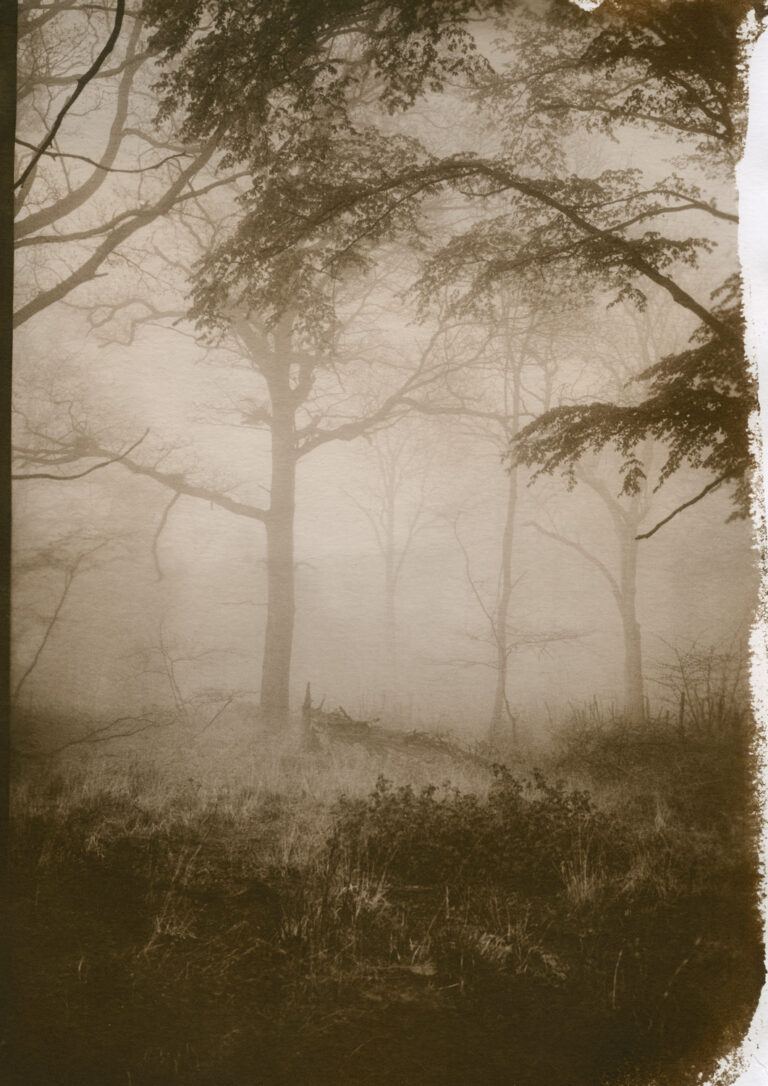Salt Printing /
Handmade Salt Prints | Historic Photographic Processes | Alternative Photography | Salt Printing Workshops, London
Exploring the Salt Print Process
Salt printing is one of the earliest photographic processes, developed in the 1830s by William Henry Fox Talbot. Known for its subtle tones and soft, matte finish, salt prints are contact printed on hand-coated paper, offering a rich, tactile quality that is impossible to replicate digitally.
In my practice, I use salt printing to explore the fragility of presence, the passage of time, and the material essence of photography. Each print is made by hand, using sensitised paper, large-format digital negatives, and UV exposure. No two prints are identical—each carries its own tonal variations and surface qualities, shaped by chemistry, paper, and light.
Contemporary Salt Prints
While rooted in photographic history, salt printing remains a vital and expressive medium. My prints sit at the intersection of photography and printmaking, often combining modern negatives with traditional techniques. The process allows for delicate control over texture, contrast, and tonality—resulting in warm, subtle images that feel both archival and contemporary.
This section includes selected works that demonstrate the aesthetic depth and quiet resonance of the process. Some are made using toned salt prints, others left in their natural state, highlighting the paper’s warm base tone and the soft edges created through contact exposure.
Several of the works shown here—including Pear and Dahlia—were created for the Royal Photographic Society exhibition Squaring the Circles of Confusion. These are albumen salt prints, a 19th-century method famously used by Julia Margaret Cameron, valued for its luminous tones and rich surface detail.
Salt printing is the earliest silver-based photographic process and the closest historic technique to traditional black-and-white silver gelatin printing. In that sense, it remains one of the most direct bridges between photography’s origins and its modern analogue form.
Salt Printing Teaching & Mentoring
Salt printing is a key part of my alternative process mentoring and one-to-one teaching programme. I teach:
How to create and prepare digital negatives
Hand-coating papers with salt and silver solutions
Contact printing and exposure using UV light
Tonal control, toning options, and best archival practices
Workshops are available in my Hackney studio for photographers, artists, and image-makers looking to reconnect with the material and tactile nature of analogue photography.
To book a place or learn more, visit the Workshops & Mentoring page or get in touch directly.
Frequently Asked Questions
What will I learn in a salt printing workshop?
You’ll learn the classic workflow: salting and sensitising paper, contact printing with digital or film negatives, exposure, development, and optional toning for archival colour shifts.
Do I need prior experience or a camera?
No experience needed, and you don’t need a camera to start—many participants use provided demo negatives or bring image files for digital negatives. The process is ideal for beginners and for photographers revisiting historic techniques.
Where are sessions held?
In my Hackney, East London studio. One‑to‑one tuition and small groups are available, with all materials provided.
Some of these salt prints were created as part of the tuition I offer — the same materials and techniques explored in my salt printing workshops and classes.















